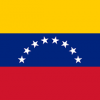Interesting to deal with burner clearances, instead of leaving it to furnace supplier through a more general ‘Process Duty Spec’. Involved only in steam boiler ‘Process Duty Specs’ (not for furnaces), opinions below (not based on experience) are just indicative.
Available data treated can be found in the attached ‘furnace.xls’, as well as some details.
1. Burner clearances have not been found for forced draft furnaces. References (1) and (2), reported in ‘furnace.xls’, apparently mean natural draft type whenever they mention furnaces.
For want of more precise info (that would be welcomed from others!), it is assumed that burner clearances required for natural draft are also applicable for forced draft. This might not be far from reality concerning distances B or C of API 560, Table 12.
Clearances A=burner (tip) distance from roof tubes and B=burner (axis) from wall tubes are presented in the diagram of ‘furnace.xls’, in function of burner max heat release (see sketch in furnace.xls). Available data concern burner heat releases in the range of 2-18 MM Btu/h, extrapolation is applied to approach the burner of 95 MM Btu/h = 23.9 MM kcal/h.
2. Radiant section width for one 95 MM Btu/h burner is estimated more or less at 2x8=16 m per API, or 2x5.99=12 m per Reference (1), according to the above. Length of the chamber would be about same and height much more. Even though above extrapolation is nothing more than a wild guess, it indicates a too big combustion chamber (i.e. radiant section). If one burner of 95 MM Btu/h is not a mandatory requirement (why be?), a series of smaller burners would result in a chamber of lower volume.
3. For instance, heat supply could be satisfied by 10 vertical burners of 10 MM Btu/h each, placed in a radiant chamber of approx 3.7 m x 14.5 m x 9.5 m, as estimated in ‘furnace.xls’.
4. Other points.
α) Distance B is actually flame radius and A flame length, eventually with some margins. Consultation from burner manufacturers on flame size could supplement available information (e.g. covering forced draft or bigger burners). Manufacturers’ data for a specific burner may be more precise, yet API is generally more conservative than them (experienced for flare flames, etc); so some additional margin may be considered if approach to ‘API safe level’ is desirable.
β) Typical width for cabin style furnace is 4-6 m per Reference (1) (see ‘furnace.xls’). Required w = 12 ft = 3.7 m is close to 4 m; nevertheless a chamber of 3.7 m x 14.5 m x 9.5 m (mentioned above) seems not possible to transfer by truck as a whole, due to long rest dimensions.

 FB
FB
















